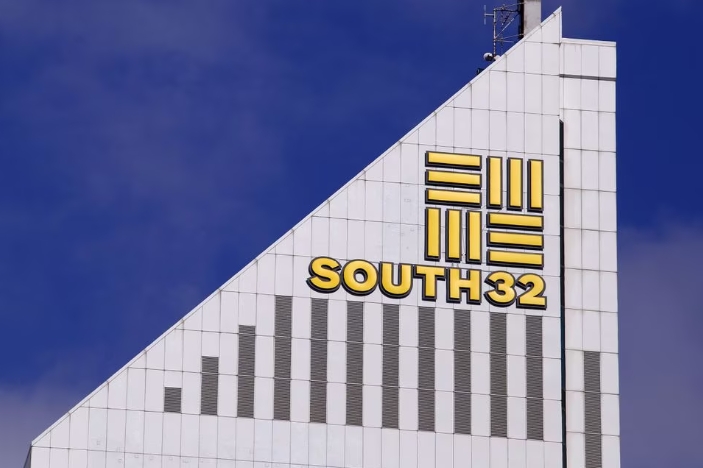ELECTRICAL GENERATING CAPACITY ADDED
DURING JUST THE FIRST FOUR MONTHS OF 2023
EXCEEDS THAT OF THE NEW VOGTLE-3 NUCLEAR
REACTOR THAT TOOK ALMOST 14 YEARS TO BUILD
NEARLY 100-GW OF ADDITIONAL WIND AND SOLAR
CAPACITY EXPECTED WITHIN THE NEXT THREE YEARS
Washington DC – Based upon a review by the SUN DAY Campaign of data recently released by the Federal Energy Regulatory Commission (FERC), utility-scale solar and wind have apparently each added more new electrical generating capacity during the first four months of 2023 than the new Vogtle-3 nuclear reactor that just came on-line after nearly 14 years of construction and major cost overruns.
FERC had earlier reported in its monthly "Energy Infrastructure Update" report for December 2022 that installed U.S. utility-scale solar generating capacity had reached 80,400 megawatts (MW) by the end of last year. However, in its most recent report, with data through April 30, 2023, FERC cites 85,790-MW of installed solar generating capacity... and that does not include new small-scale distributed PV systems. [1] Meanwhile, FERC listed 143,280-MW of installed wind generating capacity at the end of 2022 but, four months later, that figure had been increased to 146,900-MW.
This would suggest that installed utility-scale solar and wind generating capacity grew by 5,390-MW and 3,620-MW respectively during the first third of this year ... or in just four months. [2] By comparison, it took nearly 14 years to bring the new Vogtle-3 nuclear reactor in George on-line and thereby increase the nation's nuclear capacity by just 1,100-MW. [3]
The figures also suggest that the actual electrical generation by the new wind and solar capacity will exceed that of Vogtle-3 in the months and years ahead. While the nation's nuclear reactors have a higher capacity factor (92.6%) than do U.S. wind and solar farms (36.1% and 24.8% respectively), the new renewable energy installations will produce more electricity than Vogtle-3 simply because of the much greater capacity they added in the first four months of 2023. [4]
In addition, FERC's data indicate that the gap between nuclear-generated and renewably-generated electricity will grow dramatically over the next three years. Between May 2023 and April 2026, FERC anticipates 77,861-MW of net new "high probability" utility-scale solar capacity additions accompanied by 19,935-MW of net new "high probability" wind additions. There may, in fact, be as much as 213,018-MW of solar and 66,276-MW of new wind capacity in the three-year pipeline.
By comparison, FERC foresees the addition of just 1,100-MWof new nuclear power during that time frame (i.e., the Vogtle-4 reactor which is expected to come on-line in early 2024 or possibly late 2023). [5]
FERC's three-year forecast actually indicates that total installed nuclear generating capacity to decrease by 123-MW while the installed generating capacities of coal, natural gas, and oil will likewise drop by 24,934-MW, 2,242-MW, and 1,490-MW respectively.
Should just FERC's "high probability" forecasts materialize, by April 2026, nuclear power's share of total U.S. installed generating capacity will have declined from 8.06% to 7.63% while wind's share will grow from 11.55% to 12.44% and solar's share will nearly double to 12.20% from 6.75% today. Thus, wind plus solar will account for more than a quarter of the nation's installed generating capacity. Further, the mix of all renewables (i.e., also including hydropower, geothermal, and biomass) will expand from 27.81% to 33.69%.
On the other hand, like nuclear power, installed U.S. fossil fuel capacity will drop over the next three years: natural gas - 41.67% (from 44.13% in April 2023), coal - 14.15% (from 16.89%), and oil - 2.70% (from 2.96%).
"Comparing recent growth trends by nuclear power versus wind and solar yields a simple conclusion - there is no comparison," noted the SUN DAY Campaign's executive director Ken Bossong. "Renewable energy sources can be brought on line far more quickly, in much larger volume, and at lower cost than nuclear power or the mix of fossil fuel options."
Sources:
FERC's 6-page "Energy Infrastructure Update for April 2023" was released on June 7, 2023, and can be found at: https://cms.ferc.gov/media/energy-infrastructure-update-april-2023. For the information cited in this update, see the tables entitled "New Generation In-Service (New Build and Expansion)," "Total Available Installed Generating Capacity," and "Generation Capacity Additions and Retirements."
FERC's 7-page "Energy Infrastructure Update for December 2022" was released on February 7, 2023, and can be found at: https://cms.ferc.gov/media/energy-infrastructure-update-december-2022
Notes:
[1] FERC generally only reports data for utility-scale facilities (i.e., those rated 1-MW or greater) and therefore its data do not reflect the capacity of distributed renewables, notably rooftop solar PV which - according to the U.S. Energy Information Administration (EIA) - accounts for approximately 30% of the nation's electrical generation by solar. That would imply that the total of distributed and utility-scale solar capacity combined is significantly more than the solar capacity of 6.75% reported by FERC for the first third of 2023 and is perhaps closer to 9.0% or 10.0%.
[2] This release notes the changes in the reported nstalled generating capacity figures for solar and wind cited in the "Energy Infrastructure Update" reports FERC released for December 2022 and April 2023 respectively. However, the latter report also provides data on "cumulative" additions for January - April 2023 for wind and solar that are a bit lower (solar - 3,409-MW and wind - 1,967-MW). Based on past reviews of FERC data, the SUN DAY Campaign assumes that the lower numbers are subject to eventually being adjusted upward. For example, FERC itself notes that its data are derived from Velocity Suite, ABB Inc. and The C Three Group LLC. and adds the caveat that "the data may be subject to update."
[3] Georgia Power began construction on the Vogtle-3 nuclear reactor in Burke County, Georgia in June 2009. It was finally connected to the grid on April 1, 2023- i.e., nearly 14 years later and at roughly double its initial cost estimate. See: https://en.wikipedia.org/wiki/Vogtle_Electric_Generating_Plant
[4] The cited capacity factors are derived from EIA's latest "Electric Power Monthly" report issued on May 24, 2023. See: https://www.eia.gov/electricity/monthly/epm_table_grapher.php?t=table_6_07_b. To enable a very rough, side-by-side comparison of the future electrical generating potential of the new capacity provided by Vogtle-3 and the capacity additions reported by FERC for wind and solar for the first third of 2023, adjust the capacity figures for each energy source by its respective capacity factor. That yields: nuclear - 1,018.6-MW, wind - 1,306.82-MW, solar - 1,336.72-MW.
[5] Communication (June 9, 2023) from Tim Judson, Executive Director of the Nuclear Information & Resource Service who reports that the U.S. Nuclear Regulatory Commission "could authorize fuel loading at Vogle-4 anytime now, at which point startup and grid connection could occur within four to six months, if there aren’t any malfunctions." He adds that "that all of the next-generation reactors that are currently planned for licensing and construction are federally-sponsored projects. And the total capacity of all of those projects amounts to 1,447 MW, just 30% more than one of the Vogtle units." However, FERC does not include potential capacity additions by any of these latter reactors in its 3-year forecast.
The SUN DAY Campaign is a non-profit research and educational organization founded in 1992 to support a rapid transition to 100% reliance on sustainable energy technologies as a cost-effective alternative to nuclear power and fossil fuels and as a solution to climate change. Follow on Twitter: @SunDayCampaign

